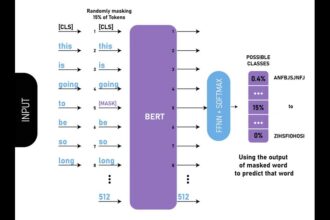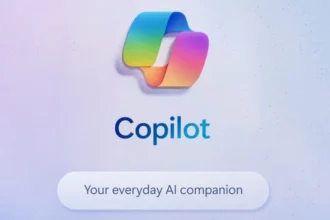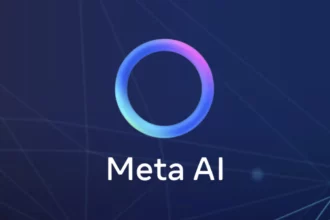How to Improve RAG Performance: 5 Key Techniques with Examples
Ah, diving into the realm of improving RAG performance, are we? It’s like tweaking a recipe to make it tastier or adjusting your car for better mileage – a little fine-tuning can go a long way! Let’s equip you with some goodies to enhance those Retrieval Augmented Generation (RAG) systems.
Alright, buckle up and let’s explore how to elevate your RAG game with these 5 key techniques. Picture this: You’re the conductor of a well-oiled RAG orchestra, fine-tuning each instrument for harmonious results.
First off, setting the stage with ‘Indexing.’ Think of it as laying down the groundwork for your RAG show. By cleaning up data from various sources and transforming them into digestible bits, you’re essentially creating a menu for your audience – or in this case, your LLMs – to choose from.
Next up is ‘Retrieval.’ Imagine your system as a diligent librarian swiftly fetching relevant information in response to user queries. It’s all about finding those hidden gems in the data haystack and serving them up on a silver platter.
And last but not least, ‘Generation’ steps in like the star performer taking center stage. Your user query and retrieved chunks join forces to create an epic prompt that dazzles your LLM with just the right amount of pizzazz.
Now let’s address the elephant in the room – limitations. Yes, even our shiny RAG systems have their kryptonite. From data quality woes to mismatched retrieval results and even wild goose chase answers from our LLMs – there are hurdles aplenty.
But fear not! We’ve got strategies up our sleeves to tackle these challenges head-on. Think of them as power-ups that turn those limitations into mere speed bumps on your road to RAG mastery.
Fancy a sneak peek at some insider insights? Saviez-vous: Chunking, Re-Ranking, and Query Transformations are your trusty sidekicks in crafting that impeccable RAG system that churns out top-notch responses akin to creating culinary wonders from scratch!
Now imagine yourself armed with these tips – customizing chunk sizes here, dabbling in re-ranking techniques there – each tweak bringing you closer to RAG perfection.
Quick question before we part ways – ever thought about what could happen if you adjust those chunk sizes or delve into Re-Ranking techniques? The possibilities are endless! So why not roll up those sleeves and give it a shot?
Excited? Well buckle up because we’re just getting started on this thrilling journey towards mastering the art of Retrieval Augmented Generation! Happy tinkering!
Table of Contents
ToggleHow Does Retrieval Augmented Generation (RAG) Work?
Diving into the fascinating realm of Retrieval-Augmented Generation (RAG), are we? Picture this: your LLM is like a chef in a kitchen preparing a meal with just the ingredients on hand. Now, with RAG, it’s as if this chef can teleport to a fancy food market to fetch the best, freshest produce before whipping up the perfect dish. How does this magic happen?
Let’s break it down. Retrieval-Augmented Generation works by first fetching pertinent information from different sources using a query generated by the LLM. This newfound knowledge is then integrated into the LLM’s input, allowing it to craft more precise and contextually relevant responses. It’s like giving your LLM access to an extensive library of facts and ideas outside its usual training materials – think of it as expanding its culinary repertoire with exotic ingredients for extra flair!
Now, let’s spice things up by exploring how to soup up this retrieval process in augmented generation. By cherry-picking top-notch system messages and data sources while also tapping into your trusty LLM for assistance in selection, you can seriously elevate your RAG game. It’s akin to selecting only the ripest fruits and veggies for your culinary masterpiece – precision is key.
But wait! Like any good recipe, there are challenges to tackle. Picture this hiccup: Your LLM mistakenly serves up a cold pizza when you clearly asked for a hot lasagna! To combat such mishaps, RAG swoops in superhero-style by enhancing LLMs through semantic similarity calculations and external knowledge references. This helps minimize errors and guarantees that your responses hit the mark every time – no more cold pizza surprises!
And hey, let’s not forget about jazzing up your RAG patterns with Re-Ranking techniques! Just like adjusting seasoning levels for that perfect taste balance in cooking, Re-Ranking assists in selecting pivotal chunks within text responses for those complex queries. It’s all about fine-tuning each element to craft responses that not only dazzle but also deliver exactly what users crave.
So there you have it – Retrieval-Augmented Generation at its finest! Now armed with these insights, you’re ready to embark on an exciting journey towards mastering RAG and delighting users with tailored responses fit for a feast! Bon appétit!
Indexing
In the world of Retrieval-Augmented Generation (RAG), indexing plays a crucial role in aligning user queries with data content. 📝Imagine this: You have chunks of information that may contain redundant or irrelevant details. What if you could break them down into smaller, more manageable pieces like puzzle parts? That’s where indexing by subparts comes into play! By splitting chunks into sentences and indexing each separately, you’re essentially creating bite-sized nuggets of information ready to be served to your LLM for crafting precise responses.
Why is this approach useful, you ask? Well, picture this: Long chunks discussing multiple topics or presenting conflicting information can lead to noisy and less accurate outputs when used in the traditional RAG process. However, when you dissect these chunks into smaller, well-defined sentences, each sentence becomes a focused entity tackling a specific topic. Think of it as serving your LLM with individual recipe ingredients instead of a messy kitchen sink – clarity is key for that perfect dish (or response)!
- Indexing is crucial for setting the stage and organizing data for your RAG system.
- Retrieval plays a key role in swiftly fetching relevant information in response to user queries.
- Generation combines user queries and retrieved data to create compelling prompts for your LLM.
- Acknowledge and address limitations in RAG systems to overcome challenges effectively.
- Utilize techniques like Chunking, Re-Ranking, and Query Transformations to enhance your RAG system’s performance.
- Customize chunk sizes and experiment with re-ranking techniques to fine-tune your RAG system for optimal results.
Pre-retrieval Techniques:
- Quality Improvement of Indexed Data:
- Remove irrelevant text/documents specific to your task.
- Reformat indexed data to match end users’ expected format.
- Add metadata for efficient retrieval.
For example, tagging math problems with metadata indicating concepts and levels can help differentiate problems testing addition from those involving multiplication or division. Moreover, losing information during chunk splitting poses a challenge – consider replacing pronouns with actual names later used in the chunk text to enhance semantic meaning during retrieval.
Now think about it: by implementing these techniques and fine-tuning your indexing process like a chef meticulously prepping ingredients before cooking up a storm, you’re setting the stage for an impeccable RAG performance! So roll up those sleeves and get creative with how you index your data – who knows what delicious responses await on the other side! 🍳🔍
Exploring the Limitations of RAG and How to Address Them
In the world of Retrieval-Augmented Generation (RAG), while this innovative architecture has revolutionized how Large Language Models (LLMs) operate by integrating external knowledge sources for enhanced responses, it’s not all rainbows and butterflies. Let’s delve into the limitations that come hand in hand with RAG systems and strategies to combat them effectively.
One major hurdle faced by current RAG models is their inability to engage in iterative reasoning processes fully. Picture this scenario: Your RAG system is like a player trying to solve a complex puzzle but lacking the ability to rearrange the pieces for a better fit. It struggles to determine whether the information retrieved is truly relevant for solving the problem at hand, leading to potential missteps or inaccuracies in responses.
To navigate through this limitation maze, one must consider employing advanced document retrieval techniques such as Query Expansion, Cross-Encoder Re-Ranking, and Embedding Adaptors. These powerhouse tools can significantly enhance RAG systems by expanding query scope, refining ranking processes, and adapting embeddings for more precise information retrieval.
Now, let’s take a closer look at some strategies to address these limitations head-on. Imagine your RAG system as a plant needing some extra care and attention to flourish – similarly, it thrives with nurturing through techniques like iterative refinement of retrieved data chunks and implementing sophisticated ranking algorithms for optimal performance. By fine-tuning these elements within your RAG setup, you’ll be able to boost accuracy, relevance, and overall AI efficiency.
So there you have it – tackling the limitations of Retrieval-Augmented Generation isn’t rocket science; it just requires a bit of finesse and strategic maneuvering. With the right tools in your arsenal and a dash of creativity thrown into the mix, you’ll be well on your way to mastering the art of overcoming RAG challenges like a seasoned pro! Happy problem-solving!





